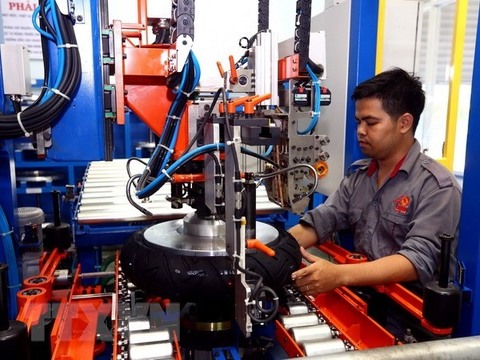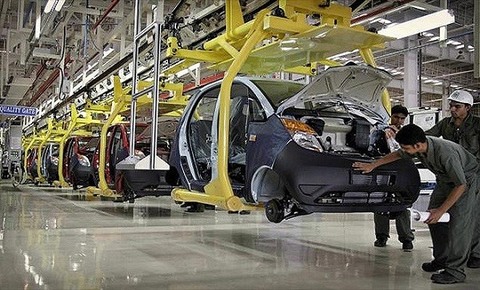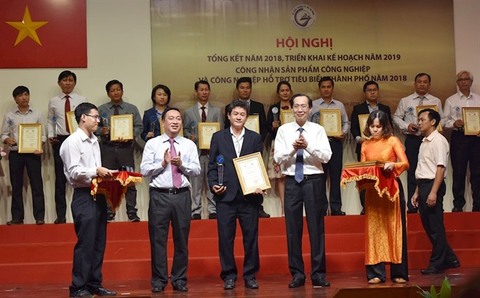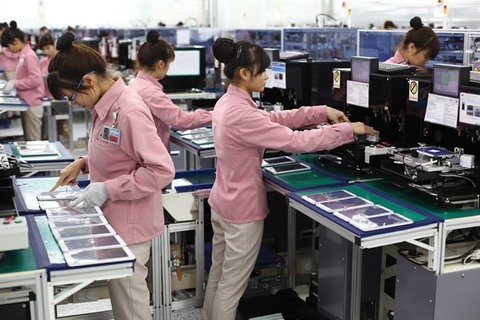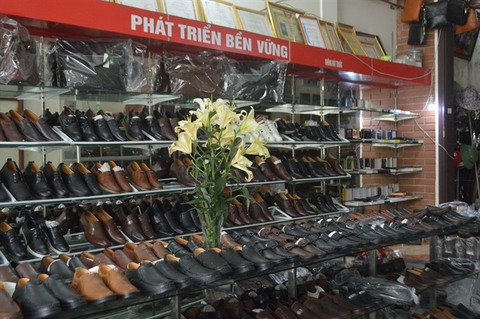Glocalisation at full speed in GE Haiphong
Glocalisation at full speed in GE Haiphong
Closing two years of transformation, GE Haiphong is now a full-fledged member of five Brilliant Factories across the world which make full use of connected digital solutions, advanced manufacturing, and radical optimisation to stand in the frontline of Industry 4.0.
While GE has been present in Vietnam for a quarter century now, the Haiphong manufacturing facility was only established in 2010. A little less than a decade and $111 million of investment later, the factory employs a workforce of more than 1,000 and has exceeded the $1 billion threshold in cumulative export revenue.
In addition to its contributions to GE’s global operations, the factory has also given Haiphong and Vietnam a much-needed and appreciated boost by bringing to the country world-class technology and management expertise, while striving to ensure ample benefits trickle down to the local economy – not only in training and employment, but by the localisation of supply and the promotion of 4.0-compatible governance principles.
The Haiphong Brilliant Factory’s transformation began in 2016 and featured intensive investment into digital-ready hardware and versatile software ensuring continuous connectivity and oversight. The driving principle is Lean Manufacturing: ensuring there is always just enough of everything, at the right place and the right time – minimising waste, clutter, and confusion.
The point of Lean Manufacturing is efficiency and optimisation: through digital tools, such as GE’s very own Predix platform for Industry 4.0 and IIoT software, the layout of the entire factory, each production and assembly line, and each workstation are modelled and simulated before being built to ensure maximum efficiency.
In-built sensors permeate the building and each smart tool, from robots the of a smaller house to the automated carts ferrying just the right amount of tools to arrive exactly when they are needed. This entire ecosystem allows for optimisation literally down to the individual screws and the torque-setting on the electric screwdriver that drives them in.
The transformation of GE Haiphong has certainly paid off: the facility has reported increases of 25 per cent in effectiveness and 15 per cent in productivity, with 30 per cent shorter lead time. Not only have there been no workplace accidents, there has not been a single defect escaping the walls of the facility, which tells of rigorous oversight.
Glocalisation in practice
“In Vietnam we are GE, but in GE we are Vietnam,” said Son Pham, CEO of GE in Vietnam and Cambodia, stating that not only is GE Haiphong a landmark among GE successes, but it is a grand example of how the company has taken international technology and governance, and married it with local resources, workers, and operations.
This Brilliant Factory is a case-study in ‘glocalisation’ the combination of globalisation and localisation, as all activities carry a distinct relevance to both Vietnam and GE’s global operations.
GE takes special care to ensure Vietnamese workers are given as many opportunities as possible: all employees in the facility, save for one, are Vietnamese, who – at the end of the two-year transformation – are all skilled employees to varying degrees: everything from management to assembly are all in the hands of local workers.
This is a result of extensive training programmes putting GE’s global knowhow into the hands of the young and dynamic local workforce. The human factor is of particular importance, according to Wouter Van Wersch, president and CEO of GE Asia-Pacific, as without human sensibilities the dots would not be connected: none of the accumulated data would be turned into the Big Data necessary for the spectacular gains the factory has posted so far.
“Employees have the specialised knowledge of how the company and its products operate. It is of key importance to retain talented employees,” he added.
This is especially true in light of GE’s approach to production: as opposed to splashing out on full robotisation and mechanisation, the corporation strives to retain the spark of human brilliance and builds around it, optimising the efficiency of human work wherever possible. Production lines are not fully automated, instead, workers use smart tools which evaluate their performance just as they evaluate the machines they work with.
This approach also alleviates concerns over machinery and technology replacing human workforce: GE Haiphong actually employs more people since the beginning of its brilliant transformation, and is planning to take on an additional 300 or so workers in the year ahead.
“This is it about business: if you are competitive, you have the market – and if you have the market, you have space to grow,” explained Olivier Fontan, vice president, Global Supply Chain, for GE Renewable Energy.
While local workforce is empowered by GE’s strategy, they operate as an organic part of the global GE system. For instance, all the data recorded in the facility is automatically uploaded to GE’s global cloud and is accessible for authorised personnel from anywhere in the world to be refined into useful Big Data.
Last but not least, GE’s localisation efforts extend to local suppliers. GE makes an effort to source as much of its production needs from within the country as possible. Currently, 20-30 per cent of what the Haiphong Brilliant Factory produces has Vietnamese content and the corporation is working to improve this figure by participating in programmes to help local suppliers gain access to the supply chains of foreign-invested companies. One such instance was the programme jointly ran by the World Bank and the Vietnamese Ministry of Industry and Trade, where GE posted eight members to the panel of advisors.




